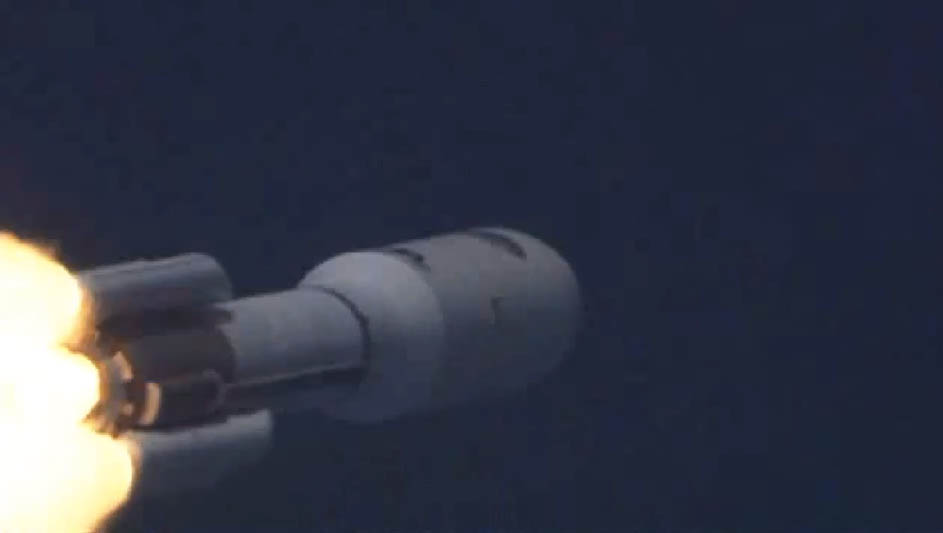'My Big Fat Greek Wedding 2' is wholesome, sentimental family fare
Mar 24, 2016
We wanted to find somebody just like I was cast in the first movie. "And I did it with comedy but really went in there". Nia Vardalos and John Corbett return in My Big Fat Greek Wedding 2. "I can't complain, I just have to keep writing".
Western US homebuyers push up sales of new homes in February
Mar 24, 2016
Builders' view of current sales conditions held steady, while a measure of traffic by prospective buyers increased. The housing market is expected to make gains this year amid low mortgage rates and strong job growth.
Google Glass' apparent successor debuts-on a pawn shop's eBay page
Mar 24, 2016
First spotted by 9to5google, the headset is said to be Google's yet-to-be-revealed Google Glass Enterprise Edition. Similarities include a folding hinge as well as an outward-facing LED light, and a different charging interface.
Bomb scare at Delhi airport as IndiGo gets threat call, search on
Mar 24, 2016
The Indian airliner Indigo's call centre in Chennai on Wednesday, received a bomb threat call for 10 of its flights. The phone call is now being investigated, while authorities remain on high alert.
Buddy Hield One of Final Four in Running for 2016 Naismith Trophy
Mar 24, 2016
James Naismith, the Naismith Trophy is awarded annually to the women's and men's college basketball players of the year. The Spartans senior guard ended his season averaging 19.2 points, 7.8 assists and 7.6 rebounds per game.
Gov. Pence signs bill ending ISTEP
Mar 24, 2016
Mike Pence signed into law Monday that's meant to curb the ability for methamphetamine cooks to obtain pseudoephedrine. Pharmacists in Indiana will be able to limit how much cold medicine customers can buy under a measure Indiana Gov.
US grants China's ZTE temporary export license through June 30
Mar 24, 2016
ZTE said at the time the restrictions were announced that it was "working expeditiously towards resolution of this issue". The trade sanctions imposed on ZTE on the first week of March was fallout of 2012 investigation by U.S.
Lakers hold off Grizzlies 107-100, snap 4-game skid
Mar 24, 2016
The former Ron Artest has a monumental history of on-court misbehaviors, but it was his first ejection of the season. D'Angelo Russell had 11 points in 22 minutes before sitting out the final 1 1/2 quarters with a bruised left shin.
Halo 5 Warzone Firefight Gameplay Shows Ambitious New Multiplayer
Mar 24, 2016
You can get a taste for how intense Warzone Firefight can be in this epic gameplay trailer that was just released... Hammer Storm also added a new map called Torque and three new modes, Assault, Fiesta, and Griffball.
Read This Before You Do Your Taxes
Mar 24, 2016
IRS officials also urge you to use strong firewall and anti virus protection on your computer, with a strong password. The membership organization and lobbying group for people age 50 and over has more than 5,000 locations nationwide.
Prepare now for severe weather this spring
Mar 24, 2016
According to the OEM, tornadoes are common in Virginia, so people need to know what to do if a warning is issued for their area. A deadly tornado one month ago in Appomattox County is a reminder to all of us that tornadoes can happen any month of the year.
Car stolen with baby inside
Mar 24, 2016
An Amber Alert issued at around 5:15 p.m.by the Ontario Provincial Police, soon after, resulted in an intense police hunt. The car's license number is BWRC161 and police describe the suspected thief as having blond hair and being in his 40s.
FBI may have found way to unlock attacker iPhone
Mar 24, 2016
"We need to decide as a nation how much power the government should have over our data and over our privacy", CEO Tim Cook said. If you're confused about what Apple's fight with the Federal Bureau of Investigation is all about, here's what you need to know.
Flick hoops in your Facebook Messenger with latest update
Mar 24, 2016
The user has to just hold his/her finger on the basketball and point it towards the basket to shoot in that direction. If the user scores a point, then the victory is celebrated by the messenger with the help of emojis.
Elon Musk's wife files to divorce billionaire — APNewsBreak
Mar 24, 2016
He is also a champion of building a hyperloop that would transport people and cargo at the speed of sound. If you would like to discuss another topic, look for a relevant article.


